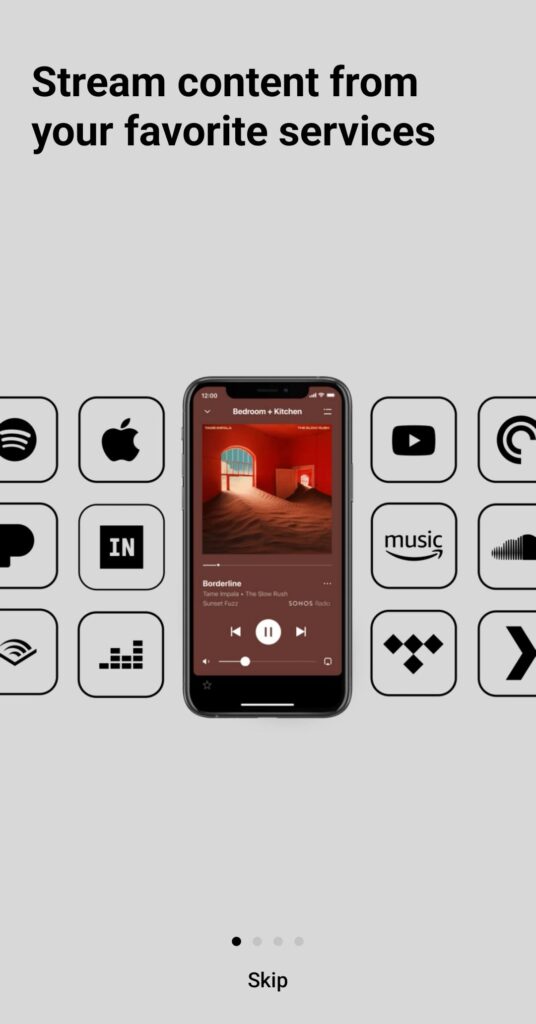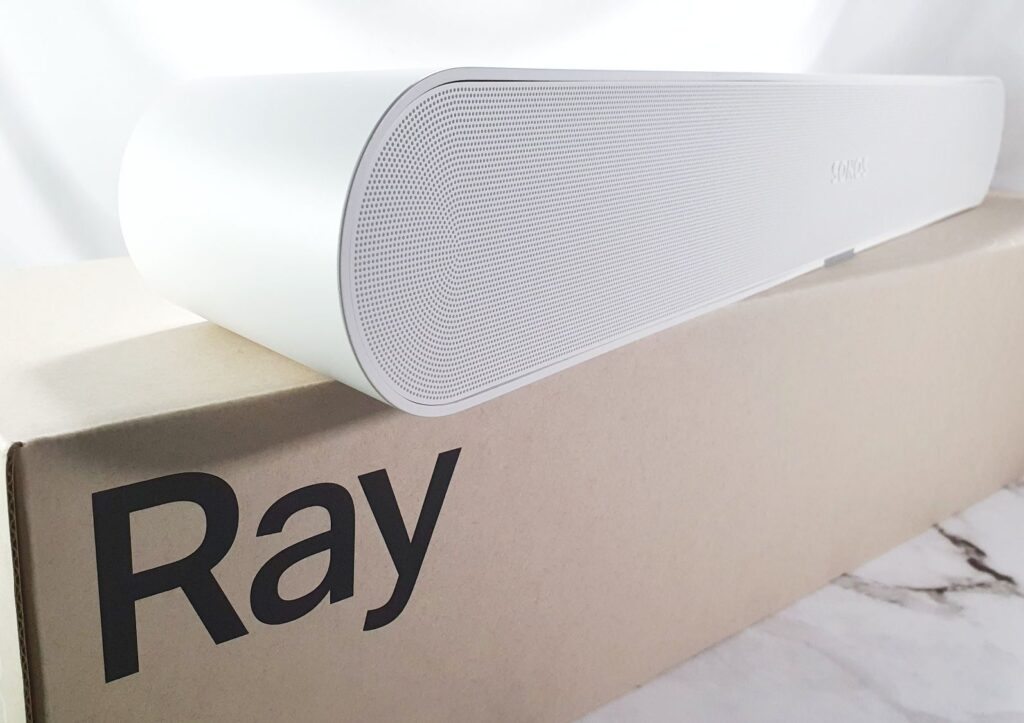
Sonos Ray Review – The Affordable Ray of Sound at RM1,799
Sonos is looking to reach out to the more cost conscious portion of the market and their latest, most affordable soundbar dubbed the Sonos Ray aims to provide their customary ease of setup, seamless integration with other Sonos gear and great sound at an even lower price point than ever before. The question remains – is it worth RM1,799? Our Sonos Ray review puts it to the test to find it if it’s worth your money.

Sonos Ray – Build and Design
Table of Contents
The Sonos Ray is intended to act as a starting point for aspiring owners looking to get in on the Sonos experience and is currently their cheapest soundbar available at RM1,799, knocking even the prior Beam Gen 2 and its RM2,699 price tag out of the ballpark for affordability. This is however with the tradeoff of some concessions to its features and capabilities which we’ll delve into shortly.
In keeping with its position on the Sonos performance totem pole, the Sonos Ray is also their most compact soundbar in the line-up with a smaller and lighter form factor than even the Beam Gen 2.
The finish comes in your choice of either a minimalist black or white finish that frames a perforated grille that’s also made of polycarbonate emblazoned with the Sonos logo which in turn houses a pair of forward facing tweeters and a pair of midwoofers powered by a quartet of Class D amplifiers.
Located just above the Sonos logo on the grille is a subtle LED indicator that helpfully lights up if you’re tweaking settings or are getting into pairing mode. Up top, you get a set of touch controls that indicate volume down and up as well as to pause or play tracks.
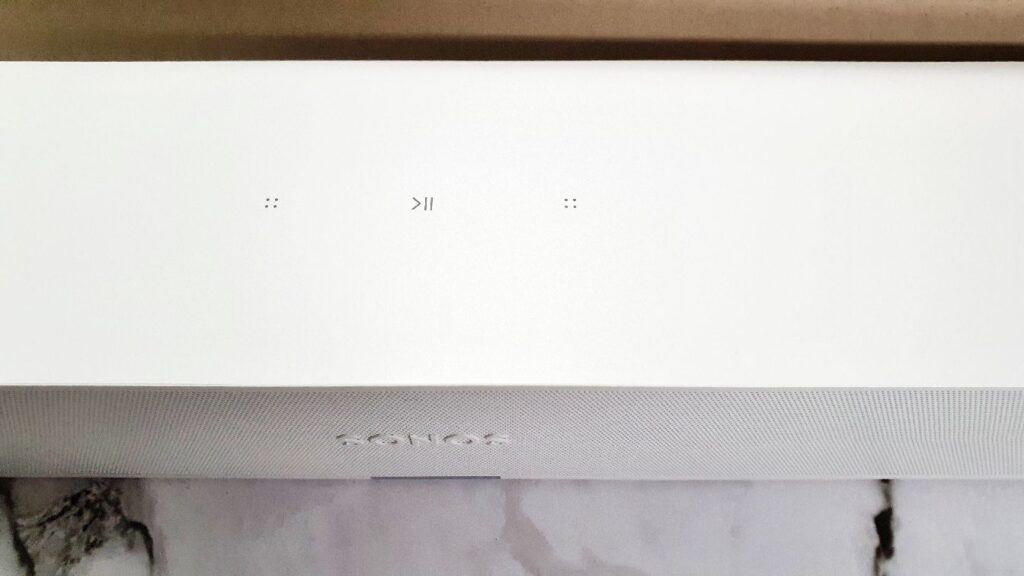
In a cubbyhole on the rear of the soundbar is a power button, a jack for the power cable, an optical audio in and an Ethernet port to hook the Ray up to your home WiFi network. Unfortunately it ditches the customary HDMI eARC connection to keep the costs down. As a pleasant bonus, they’ve provided a free 1.5m long optical cable to hook up to most TVs of recent vintage.
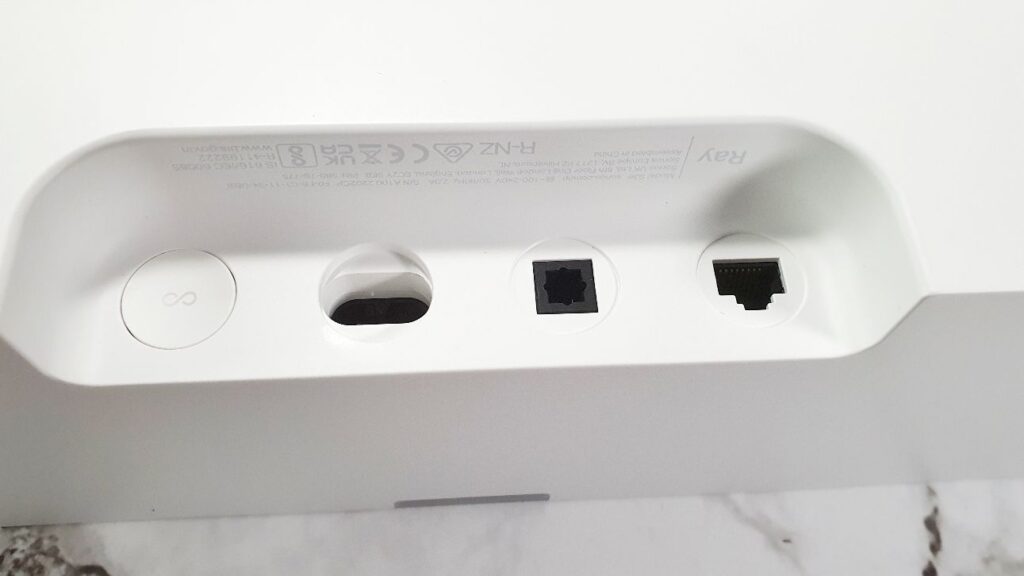
Our Sonos Ray review sample has a wired ethernet port, a jack for the power cable and an optical audio in
The base of our Sonos Ray review sample is otherwise bare save for a tiny quartet of rubber feet to prevent it from sliding around on a flat surface.
Overall build quality is excellent for our Sonos Ray review sample without any creaking across the entirety of the chassis despite being made of polycarbonate and the fingerprint resistant finish ensures it remains immaculate over time. A pleasant bonus to note here is that the Sonos Ray is sufficiently flat enough to comfortably fit under the vast majority of TVs available in the market and in lieu of that, you can purchase the optional proprietary wall mounts to bolt it to a wall.
Sonos Ray Review – Setup and Performance
Under the hood, our Sonos Ray review sample comes with a quartet of speakers consisting of a pair of tweeters and a pair of mid woofers all firing forwards though Sonos uses fairly sophisticated waveguiding tech to offer bigger, better sound. Unfortunately, the design lacks subwoofers and upward firing speakers along with Dolby Atmos support though it does support Dolby Digital 5.1 and DTS Digital Surround Sound.
The Sonos Ray also nixes the HDMI eARC connection which is likely a cost reduction measure to pare the price of the soundbar down. Another omission is that the Sonos Ray lacks built-in microphones for virtual assistant support though you can still interact with it via a paired smart speaker.
While discerning audiophiles would likely take umbrage at these omissions, the fact remains that the Sonos Ray is intended for a more mainstream, budget-oriented audience. Hardware aside, the Sonos Ray takes advantage of their seamless connectivity and easy setup centred around their Sonos S2 app.
Setting up our Sonos Ray review sample requires the installation of the Sonos S2 app that’s free for download or iOS and the Google Play store. Once installed, the app was able to detect and pair up with the Sonos Ray in minutes before it asked to hook up to a TV via the provided digital optical cable output as well as linking to any music streaming apps available via WiFi.
If you’re particularly well heeled, you can also augment the Sonos Ray with additional Sonos speakers by hooking them up via the Sonos S2 app to be part of the same system, with the option to add in a Sonos Sub and two Sonos One SL speakers to offer better bass and sound staging though if you’re already doing so, you might as well start investing in their higher end gear.
In order to offer better acoustics, you’re also able to take advantage of the Sonos TruePlay function which uses an iPhone to acoustically map the area around the Sonos Ray automatically in order to better tune the speaker. You only need to do it once unless you reposition the Sonos Ray in a radically different location. Unfortunately to this day, they still lack an Android alternative for TruePlay and it does make a subtle difference so it’s well worth the trouble to loan a friend’s iPhone to get this particular step sorted out.
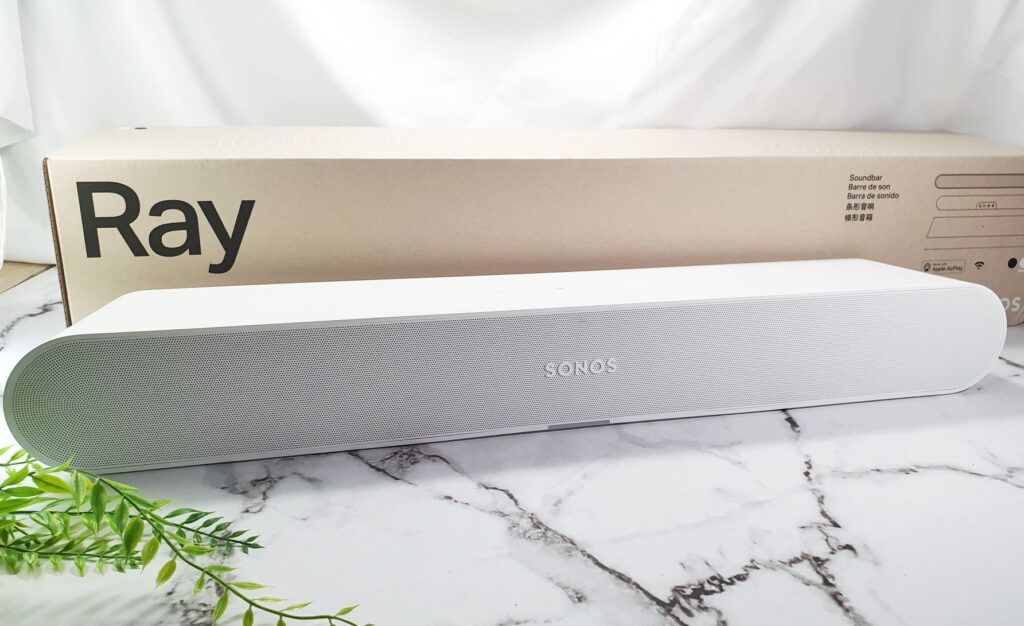
Once set up with a Smart TV running Android TV via the optical cable and via a paired smartphone via their Sonos S2 app and after loading a friend’s iPhone for setting up TruePlay, I put the Ray to work in my small work office which has a modestly high 12 foot ceiling and is cluttered with a series of tables and shelves. As I lack the rest of the extensive Sonos ecosystem of add-ons like their Sub subwoofer and additional speakers, I used it solely on its own perched just under the TV.
My Sonos Ray review sample proved to be pleasantly capable, kicking out wider, bigger sound than its dimensions and speaker configuration would suggest in a host of movies across multiple genres, an array of techno and pop tracks and a couple of PS4 games for good measure.
For a sub-RM2,000 soundbar, the Sonos Ray proved to be surprisingly good, filling my test lab with sound and still maintaining clarity without distortion even at near maximum volumes along with fair sound staging. The absolutely hilarious movie Mamma Mia and its jaunty Abba tunes was wonderfully handled and Saving Private Ryan’s Normandy beachhead scene had the requisite sound staging to make it pleasantly watchable. Kate Bush’s titular track Running Up That Hill was competently handled with clear vocals throughout.

Bass is competently handled and it performs better than what an integrated set of TV speakers are capable of offering but it’s not as beefy as the pricier Sonos Beam Gen 2; nevertheless it’s easily able to hold its own with the ability to deliver clear dialogue in natter-heavy movies via its Speech Enhancement mode and the Night Mode proved helpful for watching Michael Bay movies without waking up half the house after midnight.
Should you buy the Sonos Ray?
The Sonos Ray soundbar is an entry-level option that offers the essentials of the Sonos experience – ease of setup and effortless pairing with streaming services and other Sonos speakers – along with surprisingly good sound belying its price point. This is ideal for someone who wants a proper soundbar but isn’t yet prepared to invest in the higher end models .

Those who already own a higher end Sonos soundbar will likely find this ideal as a secondary setup from the main living room array such as a gaming room or bedroom. If you can afford it, the Sonos Beam Gen 2 is a more powerful and capable option that will serve better in the long run.
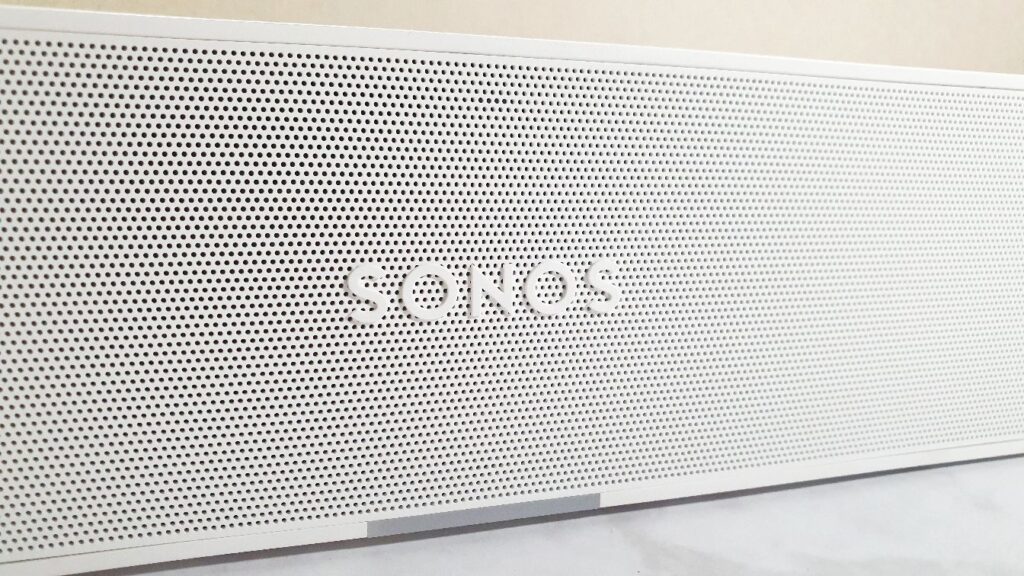
Specifications
Price RM1,799
Speakers 2 tweeters, 2 midwoofers (4 Class-D amplifiers)
Connectivity WiFi 802.11/b/g/n, optical (cable provided), Ethernet port
Size/Weight 559 x 95 x 71mm /1.95kg
Sonos Ray review sample courtesy of TCAcoustic. For more details and to purchase please visit https://trysonos.my/products/sonos-ray
Sonos Ray
-
Performance
-
Value
-
Connectivity
-
Design
Sonos Ray
The Sonos Ray is an affordable, high performing soundbar that acts as a starting point for those wanting to join the Sonos ecosystem. It lacks a few of the niceties of its higher end siblings like Dolby Atmos support to keep costs down and bass isn’t as beefy as its more powerful and pricier compatriots but it’s effortlessly easy setup and serves up good detail and vocals for what you pay for, making it an accessible general purpose workhorse soundbar for movies, music and gaming.
Pros
Exceptionally easy setup and integration with TV and other Sonos gear
Useful Dialogue Enhancement and Night mode
Good sound quality for price
Cons
Trueplay feature still needs an iPhone to work
No Dolby Atmos
No built-in microphones for voice assistant support

